
It’s not necessarily a bad thing that the sushi was unique…but it sure surprised Seiji!
Our Japanese language reporter Seiji Nakazawa was on a whirlwind trip around the U.K. recently, exploring haunted castles and becoming an international rock sensation. But a long trip can be exhausting, and sometimes you just want some comforting food from home when you’ve been on the road for a while. That’s why, upon finding his stomach rumbling after a long wander around London, Seiji stopped by a branch of the U.K.’s premier rotating sushi chain, Yo! Sushi, near Waterloo Station for a little taste of home.
What he ended up getting was far from anything he’d ever tasted in Japan; in fact, the originality of Yo! Sushi’s menu really blew him away. Even from the outside, Seiji doubted that they truly sold sushi. Though the name of the restaurant contained the word “sushi”, to Seiji, based on the menu posted in the window outside, it didn’t look like they sold any sushi he knew of.
“Well,” Seiji reasoned as he perused the offerings, “It looks like a place that serves Japanese cuisine, so maybe they decided to add ‘sushi’ to the name to qualify it as a Japanese restaurant?” Regardless, there were plenty of seats available inside, and Seiji was hungry, so he decided to go in.
After being greeted by a hostess and guided to a table, Seiji was excited to see a Japanese-style conveyor belt running through the restaurant, but was surprised to note that all kinds of food were rolling along it; not just sushi. “That’s unusual…” he thought, but he didn’t worry too much about it. He was tired from walking around all day, so he was just happy to sit, but once he had settled in and taken a glance at the menu…
He realized that all of the non-sushi food he saw on the conveyor belt was labeled as sushi!
▼ “Their creativity may have gotten a little bit out of hand…” he thought to himself with eyes bugging out of his head.
The only traditional Japanese-style nigiri sushi he found on the menu was salmon nigiri. Overall, the menu was so unique that Seiji began to wonder, “Why did they think this was sushi?”
Since there weren’t really any other items on the menu, Seiji ordered a few of their “sushi” options. The first to arrive was the “Taco Inari”. It was inari sushi, sweet vinegar rice wrapped in a pouch of fried tofu, but with an extreme twist: the addition of avocado pieces, taco-seasoning, ponzu vinegar, and sriracha mayonnaise. But what surprised Seiji the most about this particular roll was how huge the portion size was!
Next was the “Crunchy California,” a sushi roll with avocado and imitation crab that’s been sprinkled with crunchy, teriyaki-flavored fried onions and topped with mayonnaise. Seiji was mystified to find not seaweed but sesame seeds wrapped around the rice (it seems he didn’t notice that there was seaweed on the inside).
Third on Seiji’s table was the “Tuna Mayo”. This, too, was unlike its Japanese counterpart. Japanese tuna mayo sushi is usually cooked tuna with ample amounts of mayonnaise, rolled in rice and seaweed or plopped on top of rice with a seaweed wall to keep it from spilling over. The Tuna Mayo sushi at Yo! Sushi had tuna and mayonnaise, but also avocado, and no seaweed wrapping; instead, it was sprinkled with small bits of seaweed. There was also very little mayonnaise, which made the tuna dry, and Seiji sad.
After that, Seiji tasted the “Dragon”. It was a roll of imitation crab meat and avocado wrapped in rice, salmon, and sesame seeds, sprinkled with shichimi spices and green onions. Again, the omission of the seaweed wrapping baffled Seiji. He began to wonder, “What do they have against seaweed?”
Next on the list was the “Yo! Roll”. It was a salmon and avocado roll sprinkled with orange masago fish eggs. It’s supposed to be Yo! Sushi’s signature roll, but to Seiji, everything he’d eaten so far felt like special cuisine, so he didn’t see the significance.
Seiji was excited about his next plate, the Prawn Star. Finally, something wrapped in seaweed! …Except the seaweed was deep-fried. So close! This roll was filled with avocado and topped with shrimp, but Seiji couldn’t really tell because everything was covered in a nebulous orange sauce, which was surprisingly sweet.
By the way, there were just six nigiri on the menu: salmon, aburi salmon, grilled eggplant, avocado, roast beef, and fried shrimp. The rest of the menu was entirely made of sushi rolls. The prices ranged from 2.30 pounds (about 299 yen or US$2.83) to 5.50 pounds per plate, which, for Japan, is a little pricey for conveyor belt sushi, though outside of Japan those are decent prices.
In the end, although these dishes were nothing like what one might expect at sushi restaurant in Japan, the flavors of each of Yo! Sushi’s rolls were actually pretty good, aside from the fact that the rice was a little bit gooey. In fact, with a little bit of the ol’ soy sauce, they were quite delicious. It might be better if you think of Yo! Sushi’s offerings not quite as Japanese sushi but as more of a Western experimental cuisine, so as not to feel disappointment by certain aspects, like the distinct lack of seaweed.
▼ He did think the pickled ginger was especially delicious…he ended up eating a lot of it!
It seems that Yo! Sushi is the U.K.’s first rotating sushi restaurant, with plans to open shops worldwide, so you might find one opening up in your city soon! If you do stumble across one, just remember Seiji’s experience, and know that you might not be getting the most authentic Japanese conveyor belt sushi experience.
Though to be honest, we’re not really sure why Seiji was so surprised, because Japan has its fair share of weird sushi rolls, too, like the one topped with pizza, the sushi burritos, and deep-fried sushi. To each his own, we suppose!
Photos © SoraNews24
● Want to hear about SoraNews24’s latest articles as soon as they’re published? Follow us on Facebook and Twitter!
[ Read in Japanese ]


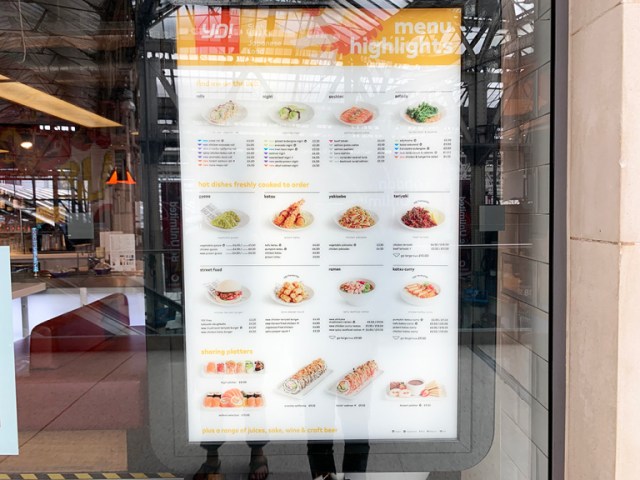
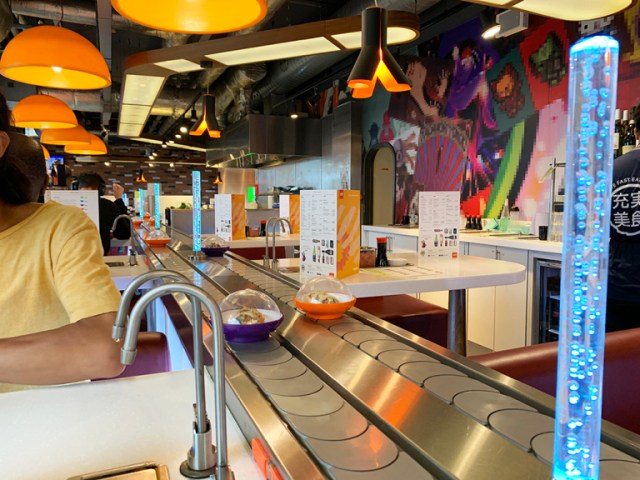
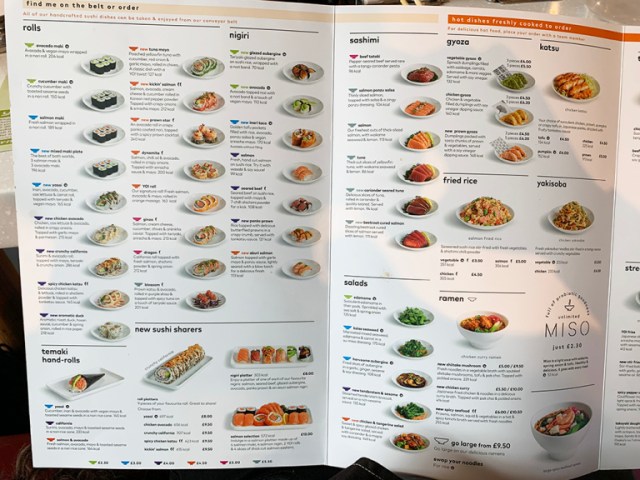
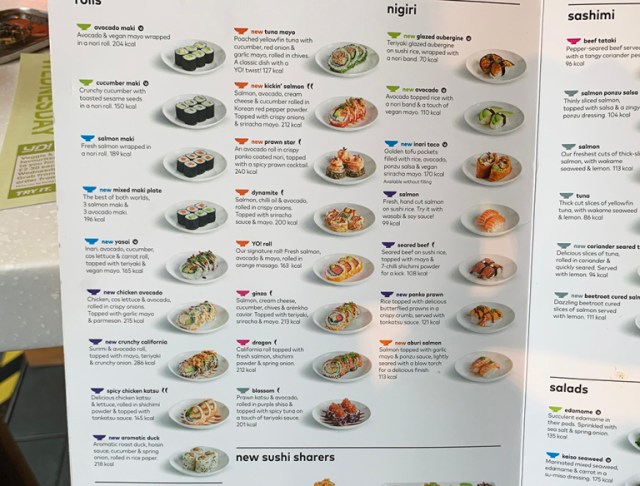
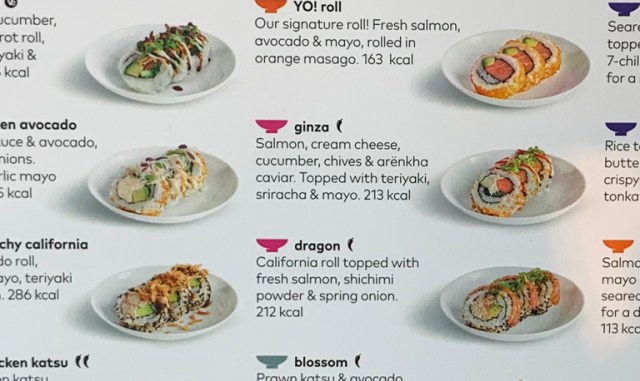
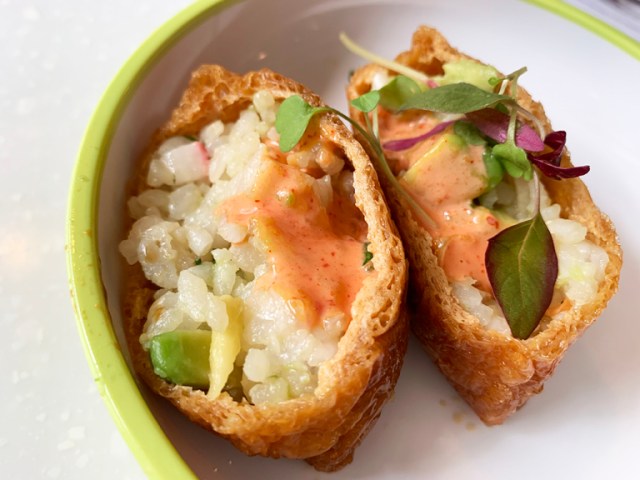
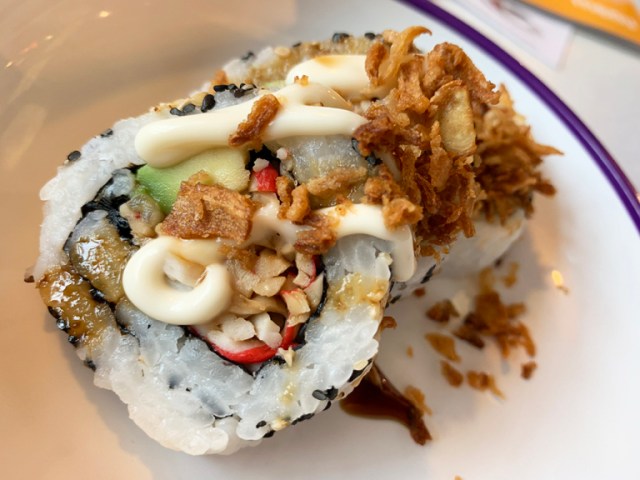
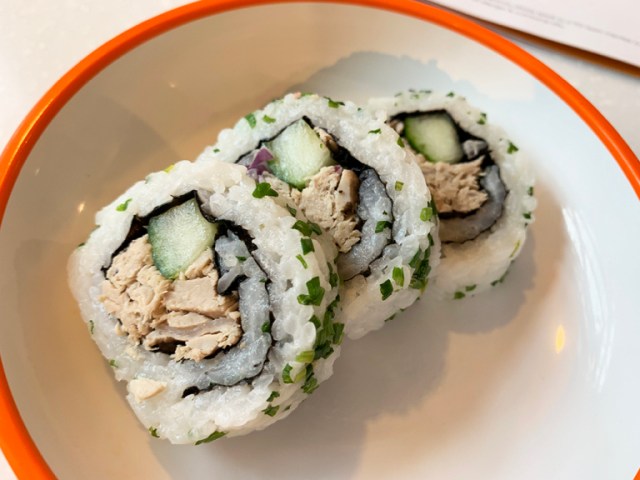
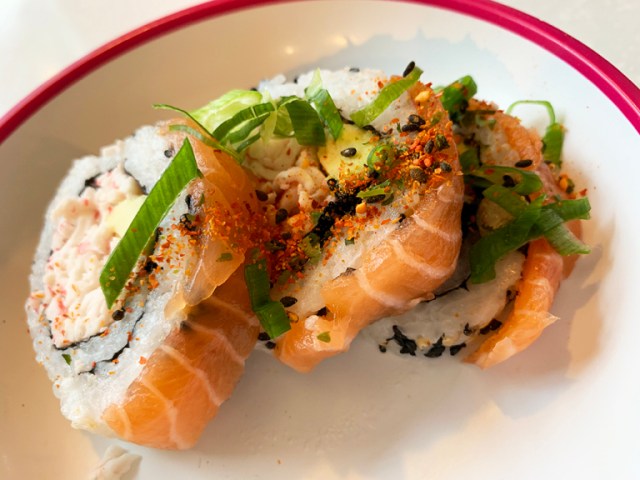
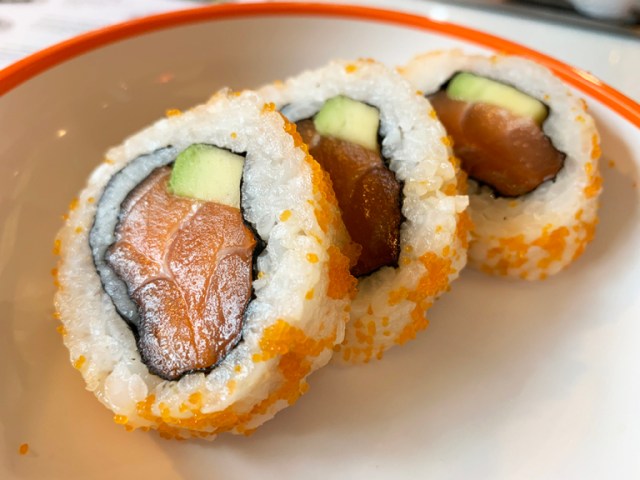
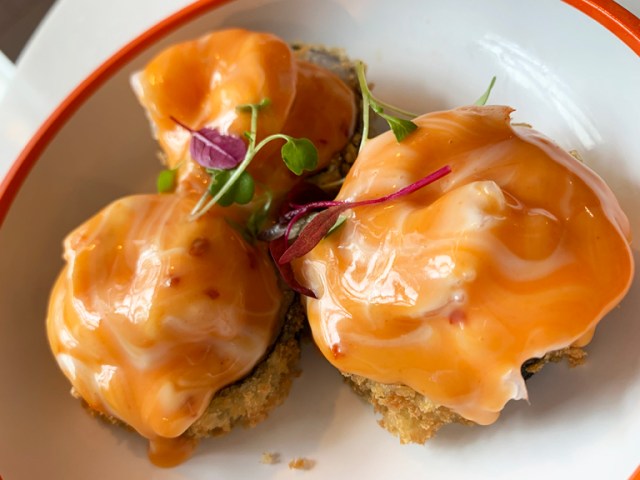
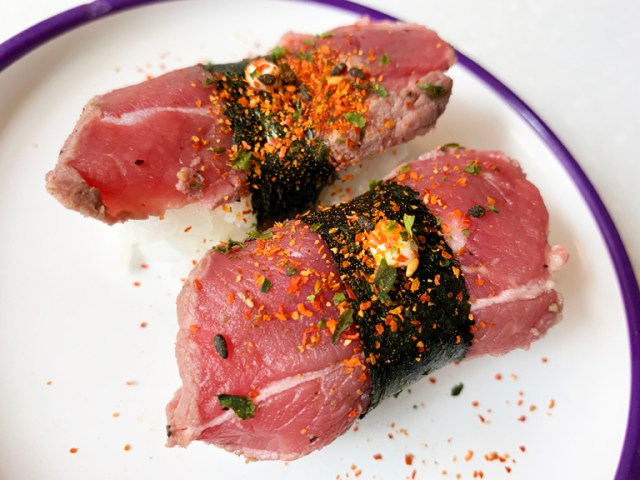
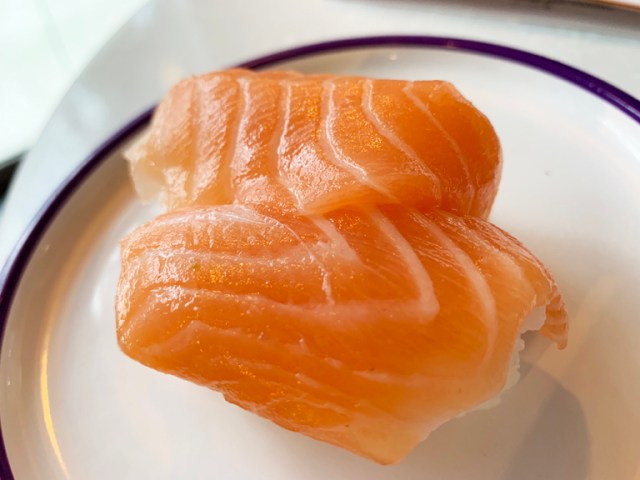
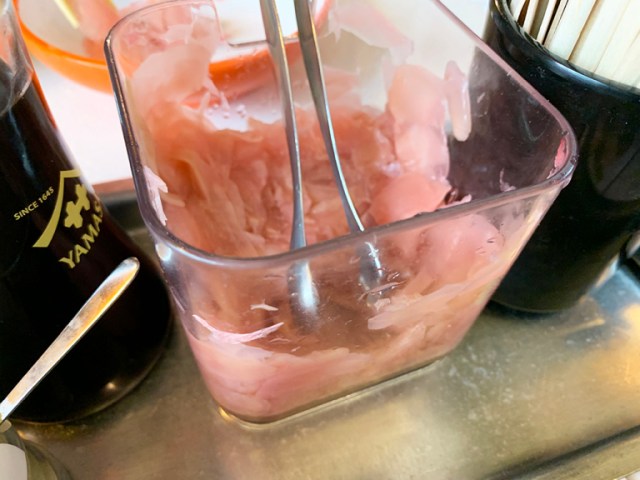
 We try a rotating sushi chain’s super high-quality 3-layer caviar, sea urchin & fatty tuna sushi
We try a rotating sushi chain’s super high-quality 3-layer caviar, sea urchin & fatty tuna sushi Who’s got the best, cheapest one-person sushi delivery in downtown Tokyo? Mr. Sato investigates!
Who’s got the best, cheapest one-person sushi delivery in downtown Tokyo? Mr. Sato investigates! How to have a great meal at conveyer belt sushi chain Kura Sushi even if you hate raw fish
How to have a great meal at conveyer belt sushi chain Kura Sushi even if you hate raw fish Supermarket sushi becomes a hot topic with foreigners on Reddit, but is it any good?
Supermarket sushi becomes a hot topic with foreigners on Reddit, but is it any good? Which Japanese conveyor belt sushi chain has the best salad sushi?【Taste test】
Which Japanese conveyor belt sushi chain has the best salad sushi?【Taste test】 How to order snacks on a Shinkansen bullet train in Japan
How to order snacks on a Shinkansen bullet train in Japan Japan’s new difficult-to-drink-from beer glass protects your liver, but it’s a brutal experience
Japan’s new difficult-to-drink-from beer glass protects your liver, but it’s a brutal experience Burger King Japan suddenly adds Dr. Pepper and Dr. Pepper floats to its menu nationwide
Burger King Japan suddenly adds Dr. Pepper and Dr. Pepper floats to its menu nationwide Demon Slayer: Kimetsu no Yaiba gets new roller coaster attractions and food at Universal Studios Japan
Demon Slayer: Kimetsu no Yaiba gets new roller coaster attractions and food at Universal Studios Japan Hello, cosmetics! Clinique teams up with Hello Kitty this summer for first-time collaboration
Hello, cosmetics! Clinique teams up with Hello Kitty this summer for first-time collaboration Kyoto Tower mascot termination reveals dark side behind cute Japanese characters
Kyoto Tower mascot termination reveals dark side behind cute Japanese characters Nintendo history you can feel – Super NES, N64, and GameCube controllers become capsule toys
Nintendo history you can feel – Super NES, N64, and GameCube controllers become capsule toys This Nara workshop has been making deer crackers for more than 100 years and offers tours【Photos】
This Nara workshop has been making deer crackers for more than 100 years and offers tours【Photos】 High-fashion Totoro cuddle purse is like an elegant stroll in the forest【Photos】
High-fashion Totoro cuddle purse is like an elegant stroll in the forest【Photos】 Legendary Melon Bread by Tokyo Banana returns after 20-year absence【Taste Test】
Legendary Melon Bread by Tokyo Banana returns after 20-year absence【Taste Test】 “The most Delicious Cup Noodle in history” – Japan’s French Cup Noodle wins our heart【Taste test】
“The most Delicious Cup Noodle in history” – Japan’s French Cup Noodle wins our heart【Taste test】 Starbucks releases a cute Frappuccino and Unicorn Cake…but not in Japan
Starbucks releases a cute Frappuccino and Unicorn Cake…but not in Japan McDonald’s Japan’s Soft Twist Tower: A phantom ice cream only sold at select branches
McDonald’s Japan’s Soft Twist Tower: A phantom ice cream only sold at select branches Yabai Ramen: What makes this Japanese ramen so dangerous?
Yabai Ramen: What makes this Japanese ramen so dangerous? Finally! Nintendo Japan expands Switch 8-bit controller sales to everybody, Online member or not
Finally! Nintendo Japan expands Switch 8-bit controller sales to everybody, Online member or not Japanese government wants to build luxury resorts in all national parks for foreign tourists
Japanese government wants to build luxury resorts in all national parks for foreign tourists To combat declining birth rate, Japan to begin offering “Breeding Visas” to foreigners
To combat declining birth rate, Japan to begin offering “Breeding Visas” to foreigners 10 things you should buy at 7-Eleven in Japan
10 things you should buy at 7-Eleven in Japan Studio Ghibli releases anime heroine cosplay dresses that are super comfy to wear
Studio Ghibli releases anime heroine cosplay dresses that are super comfy to wear Woman charged for driving suitcase without a license in Osaka
Woman charged for driving suitcase without a license in Osaka Studio Ghibli unveils My Neighbour Totoro miniature house model
Studio Ghibli unveils My Neighbour Totoro miniature house model Kyoto experiencing problems with foreign tourists not paying for bus fares, but not on purpose
Kyoto experiencing problems with foreign tourists not paying for bus fares, but not on purpose Fighting mild hunger with a Japanese soda that turns into jelly in the stomach【Taste test】
Fighting mild hunger with a Japanese soda that turns into jelly in the stomach【Taste test】 Studio Ghibli’s Howl’s Moving Castle tapestry unveiled in Japan for first time
Studio Ghibli’s Howl’s Moving Castle tapestry unveiled in Japan for first time McDonald’s new Happy Meals offer up cute and practical Sanrio lifestyle goods
McDonald’s new Happy Meals offer up cute and practical Sanrio lifestyle goods Sales of Japan’s most convenient train ticket/shopping payment cards suspended indefinitely
Sales of Japan’s most convenient train ticket/shopping payment cards suspended indefinitely Sold-out Studio Ghibli desktop humidifiers are back so Totoro can help you through the dry season
Sold-out Studio Ghibli desktop humidifiers are back so Totoro can help you through the dry season Japanese government to make first change to romanization spelling rules since the 1950s
Japanese government to make first change to romanization spelling rules since the 1950s Foreigner’s request for help in Tokyo makes us sad for the state of society
Foreigner’s request for help in Tokyo makes us sad for the state of society Ghibli founders Toshio Suzuki and Hayao Miyazaki contribute to Japanese whisky Totoro label design
Ghibli founders Toshio Suzuki and Hayao Miyazaki contribute to Japanese whisky Totoro label design Doraemon found buried at sea as scene from 1993 anime becomes real life【Photos】
Doraemon found buried at sea as scene from 1993 anime becomes real life【Photos】 Tokyo’s most famous Starbucks is closed
Tokyo’s most famous Starbucks is closed Princesses, fruits, and blacksmiths: Study reveals the 30 most unusual family names in Japan
Princesses, fruits, and blacksmiths: Study reveals the 30 most unusual family names in Japan Mr. Sato tries out Kappa Sushi’s salmon salad mountain, a fun dish available for only one week
Mr. Sato tries out Kappa Sushi’s salmon salad mountain, a fun dish available for only one week Takoyaki sushi rolls at popular Japanese chain take California rolls to a whole new level
Takoyaki sushi rolls at popular Japanese chain take California rolls to a whole new level Can’t go to conveyor belt sushi? Major Japanese chain will bring the conveyor belt to you!
Can’t go to conveyor belt sushi? Major Japanese chain will bring the conveyor belt to you! Sushi for breakfast? Our under-1,000-yen breakfast with Hama Sushi’s new morning menu
Sushi for breakfast? Our under-1,000-yen breakfast with Hama Sushi’s new morning menu Put down the soy sauce! We try a new “expert” way to season your sushi【Taste test】
Put down the soy sauce! We try a new “expert” way to season your sushi【Taste test】 Meat lovers, you can now satisfy your carnivorous cravings at this revolving sushi restaurant!
Meat lovers, you can now satisfy your carnivorous cravings at this revolving sushi restaurant! We try a rotating sushi restaurant in New Delhi, are surprised to find no rotating sushi
We try a rotating sushi restaurant in New Delhi, are surprised to find no rotating sushi “Hey, Japanese taxi driver, take us to the best seafood joint in Otaru!”
“Hey, Japanese taxi driver, take us to the best seafood joint in Otaru!” Choshimaru offers a limited-time Explodingly Big Sushi Roll, or basically sushi in sushi armor
Choshimaru offers a limited-time Explodingly Big Sushi Roll, or basically sushi in sushi armor Sushi soup? We try Japan’s latest easy-to-make, so-crazy-it-might-work meal【Taste test】
Sushi soup? We try Japan’s latest easy-to-make, so-crazy-it-might-work meal【Taste test】 Which Japanese conveyor belt sushi chain has the best negitoro sushi?【Taste test】
Which Japanese conveyor belt sushi chain has the best negitoro sushi?【Taste test】 Sushi Ramen restaurant serves up the best of both worlds in one epic Japanese meal
Sushi Ramen restaurant serves up the best of both worlds in one epic Japanese meal Which Japanese conveyor belt sushi chain has the best scallop sushi?【Taste test】
Which Japanese conveyor belt sushi chain has the best scallop sushi?【Taste test】 Which Japanese conveyor belt sushi chain has the best tuna sushi?【Taste test】
Which Japanese conveyor belt sushi chain has the best tuna sushi?【Taste test】 Our writer tries out Hong Kong’s ‘killer sushi’, lives to tell the tale
Our writer tries out Hong Kong’s ‘killer sushi’, lives to tell the tale
Leave a Reply